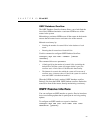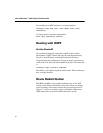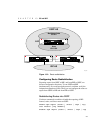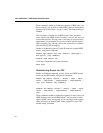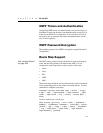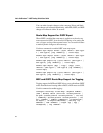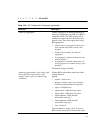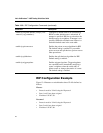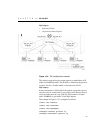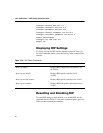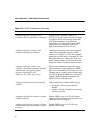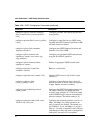
C H A P T E R 13 RIP and OSPF
239
enable rip aggregation Enables aggregation of subnet information on
interfaces configured to send RIP v2 or RIP v2-
compatible traffic. The 480T routing switch
summarizes subnet routes to the nearest class
network route. These rules apply when using
RIP aggregation:
• Subnet routes are aggregated to the nearest
class network route when crossing a class
boundary.
• Within a class boundary, no routes are
aggregated.
• If aggregation is enabled, the behavior is the
same as in RIP v1.
• If aggregation is disabled, subnet routes are
never aggregated, even when crossing a class
boundary.
The default setting is disabled.
enable rip export [static | direct | ospf | ospf-
intra | ospf-inter | ospf-extern1 | ospf-
extern2 | static | vip] cost <metric> {tag
<number>}
Enables RIP to redistribute routes from other
routing functions.
Specify:
• static—Static routes
•
direct—Interface routes (only interfaces
with IP forwarding enabled are exported)
•
ospf—All OSPF routes
•
ospf-intra—OSPF intra-area routes
•
ospf-inter—OSPF inter-area routes
•
ospf-extern1—OSPF network-
unreachable route type 1
•
ospf-extern2—OSPF network-
unreachable route type 2
•
vip—Virtual IP
The cost (metric) range is 0-15. If set to 0,
RIP uses the route metric from the route origin.
Table 13.2: RIP Configuration Commands (continued)
Command Description



